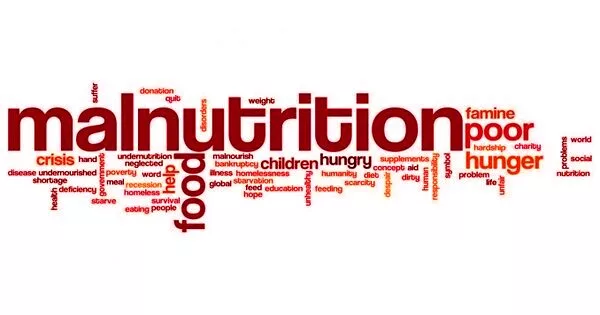Malnutrition is a serious condition that occurs when your diet lacks the necessary nutrients. It occurs when a person consumes either too few or too many nutrients, resulting in health issues. It is specifically “a deficiency, excess, or imbalance of energy, protein, and other nutrients” that has a negative impact on the body’s tissues and form. Treatment for malnutrition is determined by your overall health and the severity of your malnutrition.
Malnutrition is a disease category that includes both undernutrition and overnutrition. Undernutrition is defined as a lack of nutrients, which can lead to stunted growth, wasting, and being underweight. Overnutrition results from a nutrient surplus, which can lead to obesity. In some developing countries, overnutrition in the form of obesity is beginning to appear within the same communities as undernutrition.
Malnutrition is, at its core, a dietary deficiency that leads to poor health. Malnutrition is commonly associated with children who do not consume enough nutritious foods. It can also occur when children consume an excessive amount of the wrong foods. Unfortunately, all of these factors contribute to more than 170 million children not reaching their full potential due to poor nutrition.
Most clinical studies refer to undernutrition as ‘malnutrition.’ However, the use of the term “malnutrition” rather than “undernutrition” makes it impossible to distinguish between undernutrition and overnutrition, a less recognized form of malnutrition. As a result, The Lancet Commission proposed expanding the definition of malnutrition to include “all its forms, including obesity, undernutrition, and other dietary risks” in a 2019 report. The World Health Organization and The Lancet Commission have also identified “[t]he double burden of malnutrition,” which occurs when “overnutrition (overweight and obesity) coexists with undernutrition (slowed growth and wasting).”
Malnutrition weakens every component of the immune system. Protein and energy deficiency, as well as deficiencies in specific micronutrients, increase susceptibility to infection (including iron, zinc, and vitamins). These additional health risks pose a critical problem in communities or areas that lack access to safe drinking water.
Malnutrition makes children more vulnerable to serious diseases. Chronic malnutrition or stunting—when children are too short for their age due to inadequate nutrition, inadequate care, or living in unsanitary environments—can have a devastating and long-term impact on a child’s physical and cognitive abilities.
Malnutrition is a major contributor to the onset of active tuberculosis. It also increases the risk of HIV transmission from mother to child and virus replication. Malnutrition can result in vitamin-deficiency diseases such as scurvy and rickets. As malnutrition worsens, sufferers lose energy and experience cognitive impairment. This can make it difficult (or impossible) for them to complete the tasks required to obtain food, earn a living, or obtain an education.
Malnutrition can also result in acute problems such as hypoglycemia (low blood sugar). This condition can result in drowsiness, limpness, seizures, and loss of consciousness. Children are especially vulnerable and can become hypoglycemic after 4 to 6 hours of fasting. Dehydration can also occur in malnourished people, and can be life-threatening, especially in babies and small children.
















